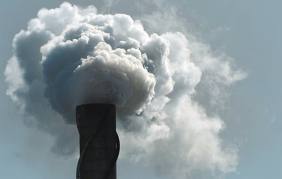 Sadly the Greenhouse Policy Coalition (GPC) welcomes the result of the poll they commissioned from UMR Research, as reported today in the Herald. I’ll comment on the poll a little later in the post, but first a reminder of what the GPC stands for. It includes some of the largest emitters of greenhouse gases in its membershipwhich it describes as “a large and diverse range of New Zealand industry and sector groups covering the aluminium, steel, forestry (including pulp and paper), coal, dairy processing and gas sectors.” They are described as responsible for 14% of GDP and 31% of total exports.
Sadly the Greenhouse Policy Coalition (GPC) welcomes the result of the poll they commissioned from UMR Research, as reported today in the Herald. I’ll comment on the poll a little later in the post, but first a reminder of what the GPC stands for. It includes some of the largest emitters of greenhouse gases in its membershipwhich it describes as “a large and diverse range of New Zealand industry and sector groups covering the aluminium, steel, forestry (including pulp and paper), coal, dairy processing and gas sectors.” They are described as responsible for 14% of GDP and 31% of total exports.
Note they do not deny the reality of human-caused climate change:
“The Coalition accepts there is growing evidence of a causal connection between observed changes in the global climate and human-induced emissions of greenhouse gases. The Coalition considers there is sufficient scientific evidence to warrant the adoption of appropriate precautionary public policy measures.”
But their notion of what constitutes appropriate measures is severely constrained by their determination to protect what they call the competitiveness of all sectors of NZ industry. They urge a wait and see attitude when it comes to doing anything of consequence to reduce NZ emissions.
“Climate change public policy should … be moderate and measured until such time as it is appropriate, and justified, to be otherwise.”
Current government policy seems to fit their bill pretty well. Although they would have preferred a suspension of the ETS they have welcomed the relief the revised scheme offered to large businesses.
Given the tepid policies being advanced by the government, the results of the commissioned poll are probably not surprising. 45.8 per cent think climate change is happening and is caused by humans – up 1.6 per cent from previously. 32.7 per cent think the climate is changing but are uncertain as to whether it is caused by humans – down 3 per cent. 19.3 per cent think the problem doesn’t exist – up 1.8 per cent.
But although 45.8 per cent think climate change is caused by humans only 36.3 per cent think it is a serious issue – down from 42.6 per cent last year. Generally speaking numbers were down on all measures aimed at mitigating climate change. For example, the 23.4 per cent of people who agreed New Zealand should reduce its emissions, even if it meant reducing the standard of living was 11 per cent down on last year’s 34.9 per cent.
Last year climate change concern was eighth in order of importance. This year it is tenth.
The GPC’s executive director, David Venables, said the results of the survey reinforced the Government’s decision to moderate the impact of the Emissions Trading Scheme and the need to fine-tune it to keep in step with New Zealand’s main trading partners – which lagged in implementing their own schemes – and the rest of the world.
In other words, in the court of public opinion the government is on the right track.
But can reasonable judgment be delivered by public opinion at the present? Public opinion is not being informed of the seriousness of climate change. The majority of our political leadership displays little or no sign of concern at the mounting dangers of increasing greenhouse gas emissions. The message they thereby deliver to the public is that the issue is not of great importance. The public gratefully receives this message and turns its mind to more immediate concerns. Whereupon the likes of the GPC point to lack of public concern as a sign that the government has got it right. It’s not too difficult to see a mutual ratcheting down process proceeding happily between politicians and the public until the folly of it becomes too apparent to ignore. And heaven knows how far off that might be.
One has to hope it will be the ineluctable science which interrupts the process and not the onset of severe events. But I have been hoping that for a number of years now, and there is little sign of full appreciation of the science in the political sphere, in the media, or in the leadership of many major companies. From where is the general public able to receive the message if it is excluded from the mainstream of political and economic life?
Real understanding of the scientific evidence would mean that David Venables would lament the result of the poll. It would see John Key and Phil Goff standing alongside each other and saying this public ignorance was dangerous and they wanted to help correct it. Tomorrow’s editorials would declare the same. Some hope.
Meanwhile all the directly measurable effects continue – global temperature rises inexorably, Arctic summer sea ice diminishes with unexpected speed, ice sheets in Greenland and Antarctica continue to lose mass. And the less specific predictions of increased wildfires, floods and droughts show every sign of coming to pass. Positive feedback loops loom in the shadows.
“Climate change public policy should … be moderate and measured until such time as it is appropriate, and justified, to be otherwise.” And when might that be, David Venables and all those for whom you speak?

 I opened the farming page of the Waikato Times yesterday evening to see a prediction from Lincoln University agribusiness professor
I opened the farming page of the Waikato Times yesterday evening to see a prediction from Lincoln University agribusiness professor